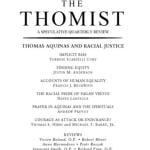UNMARKED: Amy Ziettlow at Family Scholars; especially appropriate for tomorrow’s feast:
…A room on the back of the Overseer’s House contains a coffin from that time as well as mourning costumes and customs exhibits. I was most intrigued by this quote:
“Mourning, during the 18th and 19th centuries, was governed by a strict set of cultural rules. Clothing, in particular women’s clothing, was strictly dictated by cultural customs of the day. […] Even children and children’s toys were not free from the cultural norms expected of those in mourning. Just as adult women, little girls were dressed in black, carried black fans, and even dressed their dolls in black garments. Clothing prescriptions went on for up to two years and in some cases women wore mourning garb their entire lives as a sign of absolute devotion to the deceased. Absurd by today’s standards, people of the day embraced these mourning customs to show that they mourned well.”
The last sentence, which I put in italics, stuck with me. I was first intrigued by the use of the word “absurd” especially when the people of that time would probably think our total lack of public acknowledgement of a death absurd. I wonder what they would think about how their mourning costumes are perceived in today’s culture. How people who wear all black are considered to be “weird,” Goths, or witches in our culture. If a man were seen wearing a black arm band today, we’d call Homeland Security presuming that he is a member of a radical sect who is planning on bombing something. I can hear them calling from history, saying, “Well, I guess they don’t have to wear mourning colors or costumes since they have adapted and created a new public way to acknowledge loss and suffering.” Oh wait, we haven’t done that. We have no exterior way to show grief let alone show that we have mourned well.











